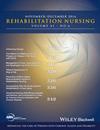Medication Management in Patients with Polypharmacy.
IF 1.1
4区 医学
Q3 NURSING
引用次数: 0
Abstract
Rehabilitation patients have complex conditions often requiring multiple medications. The term “polypharmacy” represents a well-known risk for those taking multiple medications. Polypharmacy, however, is more than duplications, overuse, or insufficient doses. In fact, there are over 130 published definitions of polypharmacy, as identified by Masnoon et al. (2017). Generally, the concept means taking five or more medications; however, such a definition does not take into account comorbidities and the safety and efficacy of drug combinations. The following is a case study that exemplifies the need to review medication lists beyond drug numbers and dosages. In addition, medications to help one condition can be contraindicated for treating another health issue. Evidence-based (and commonsense) practice requires comparisons and follow-up to identify inconsistencies, contraindications, and even the need for additional medications. Ironically, even more “polypharmacy” may be indicated when there are comorbidities. Usually, nurses perform medication reviews at every appointment, admission, or home visit. Beyond medication safety concerns, rehab nurses, in particular, recognize how quality of life can be compromised when medication problems exist.综合用药患者的用药管理。
本文章由计算机程序翻译,如有差异,请以英文原文为准。
求助全文
约1分钟内获得全文
求助全文
来源期刊

Rehabilitation Nursing
医学-护理
CiteScore
1.90
自引率
7.70%
发文量
68
审稿时长
>12 weeks
期刊介绍:
Rehabilitation Nursing is a refereed, award-winning publication and is the official journal of the Association of Rehabilitation Nurses. Its purpose is to provide rehabilitation professionals with high-quality articles with a primary focus on rehabilitation nursing. Topics range from administration and research to education and clinical topics, and nursing perspectives, with continuing education opportunities in every issue.
Articles range from administration and research to education and clinical topics; nursing perspectives, resource reviews, and product information; and continuing education opportunities in every issue.
 求助内容:
求助内容: 应助结果提醒方式:
应助结果提醒方式:


